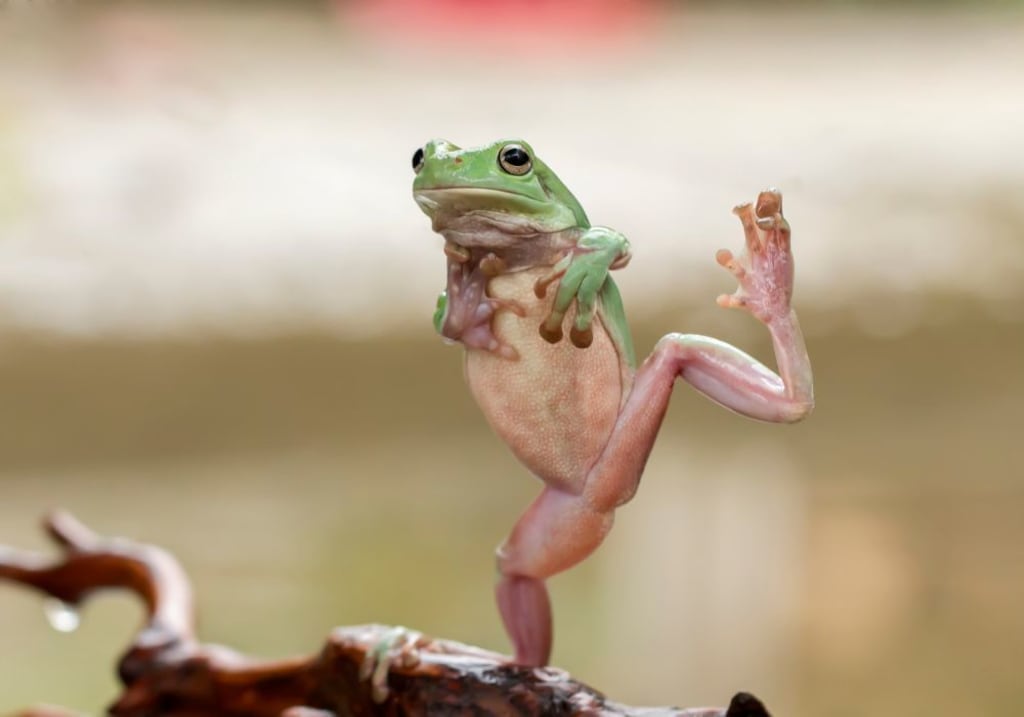
Introduction
Frogs are fascinating and unique pets that can bring joy and excitement to any home. With their vibrant colors, interesting behaviors, and relatively low maintenance care, it's no wonder why many people are drawn to keeping them as pets. However, caring for a pet frog requires attention to specific details to ensure their health and well-being. In this comprehensive guide, we will cover the essential steps to care for a pet frog, from setting up their enclosure to providing the right diet and handling them safely.
Setting Up the Enclosure
Before bringing your pet frog home, it's crucial to set up a suitable enclosure that meets their specific needs. Here are some key considerations:
- Size and Material: The enclosure should be large enough to accommodate your frog comfortably, with a minimum size of 12 inches long, 12 inches wide, and 12 inches tall. A glass or plastic aquarium with a secure lid is recommended, as frogs are skilled escape artists.
- Temperature and Humidity: Frogs require a specific temperature range, typically between 65°F to 85°F (18°C to 30°C), with a humidity level of 50% to 80%. You can achieve this by using heat lamps, heat mats, or a heat source specifically designed for reptiles and amphibians.
- Substrate and Decorations: Avoid using loose substrates like sand, gravel, or wood shavings, as they can cause respiratory problems. Instead, opt for paper towels, indoor/outdoor carpeting, or reptile bark. Add decorations like plants, rocks, and logs to provide hiding places and visual stimulation.
- Lighting: Frogs need UVB lighting to synthesize vitamin D3, which is essential for calcium absorption and bone growth. Replace the UVB light every 6-8 months, as its effectiveness decreases over time.
Diet and Feeding
Frogs are carnivorous, and their diet consists mainly of live or frozen-thawed insects. Here are some guidelines for feeding your pet frog:
- Insect Selection: Offer a variety of insects, such as crickets, mealworms, waxworms, and roaches, to ensure a balanced diet. Avoid feeding your frog insects that are too large or too small for them.
- Feeding Frequency: Feed your frog 2-3 times a week, depending on its age and size. Younger frogs may require more frequent feeding, while adults can be fed less often.
- Supplements: Dust insects with a calcium and vitamin D3 supplement to support your frog's overall health and bone growth.
Handling and Handling Safety
While frogs can be handled gently, it's essential to follow proper handling techniques to avoid injury to both you and your pet:
- Wash Your Hands: Before handling your frog, wash your hands thoroughly with soap and water to prevent the transfer of bacteria and other contaminants.
- Support the Frog: Gently support the frog's body, avoiding direct pressure on its sensitive skin. Hold the frog securely but not too tightly, as this can cause stress.
- Avoid Handling During Moulting: Frogs undergo a process called moulting, where they shed their skin. Avoid handling your frog during this period, as it can cause stress and potentially lead to infection.
Health and Hygiene
Regular monitoring of your pet frog's health and maintaining a clean enclosure are crucial for its well-being:
- Monitor for Signs of Illness: Keep an eye out for signs of illness, such as lethargy, loss of appetite, or changes in skin color. Consult a veterinarian experienced in caring for amphibians if you notice any unusual behavior.
- Clean the Enclosure: Clean the enclosure regularly by removing feces and uneaten food, and replacing the substrate as needed. Disinfect all surfaces with a reptile-safe cleaning solution.
- Maintain Proper Hygiene: Wash your hands thoroughly after handling your frog or its enclosure to prevent the spread of bacteria and other contaminants.
Conclusion
Caring for a pet frog requires attention to specific details, from setting up the enclosure to providing the right diet and handling them safely. By following these guidelines, you can create a healthy and happy environment for your pet frog to thrive. Remember to monitor its health, maintain proper hygiene, and provide a balanced diet to ensure a long and fulfilling life for your amphibian companion.
About the Creator
Hasan
Welcome...
In this site of mine you can learn amazing things and many information that you don't know so please subscribe to my site.
Enjoyed the story? Support the Creator.
Subscribe for free to receive all their stories in your feed. You could also pledge your support or give them a one-off tip, letting them know you appreciate their work.






Comments
There are no comments for this story
Be the first to respond and start the conversation.